Address
304 North Cardinal
St. Dorchester Center, MA 02124
Work Hours
Monday to Friday: 7AM - 7PM
Weekend: 10AM - 5PM
Address
304 North Cardinal
St. Dorchester Center, MA 02124
Work Hours
Monday to Friday: 7AM - 7PM
Weekend: 10AM - 5PM

The kitchen appliance industry is constantly evolving, with innovation being the driving force behind the creation of new and improved products. Among these innovations, grill mold making has emerged as a pivotal process that not only shapes the physical form of grills but also has profound implications for their quality, efficiency, and cost-effectiveness. This article delves into the significance of in-house mold making, showcasing its impact on grill design, the efficiency of production, and the exciting case studies where innovation has redefined the landscape of grills. It also examines the future trends and technological advancements shaping this domain, offering a glimpse into the future of grill molding and the industry at large.
In the heart of modern kitchens, the era of one-size-fits-all appliances has given way to a surge in customization. Consumers no longer seek just a functional tool; they desire appliances that reflect their personal style and unique needs. This shift has propelled the kitchen appliance industry into a new realm of innovation, with a particular spotlight on grill innovations. As the demand for personalized and high-quality cooking experiences grows, the rise of customization in kitchen appliances has become a transformative force.
The desire for unique and tailored kitchen appliances is not a fleeting trend; it is a reflection of the broader consumer shift towards personalization across all facets of life. From smartphones to fashion, the ability to express one’s individuality through products has become increasingly important. Kitchens, once considered utilitarian spaces, are now seen as extensions of personal style and self-expression. This mindset has paved the way for a surge in customized kitchen appliances, with grills being at the forefront of this trend.
Grills, traditionally a staple in outdoor cooking, have made their way indoors, and with them, a newfound appreciation for their versatility and aesthetic appeal. The traditional, uniform grill designs have given way to a plethora of styles, from sleek and modern to rustic and traditional. This diversity is made possible by the advent of in-house mold making, which allows manufacturers to create custom molds that can produce grills with unique shapes, sizes, and even textures.
One of the key drivers behind the rise of customization is the evolving kitchen landscape. Modern kitchens are not just places to prepare meals; they are social hubs, entertainment spaces, and even art installations. As such, kitchen appliances must not only function well but also complement the overall design aesthetic of the space. Custom grills offer a solution that fits seamlessly into this multi-functional environment, allowing homeowners to integrate their cooking equipment with the rest of their kitchen decor.
Moreover, the customization trend is closely tied to the growing demand for convenience and efficiency. Homeowners are looking for appliances that not only make cooking easier but also enhance the overall cooking experience. Grills that come in a variety of designs, from compact countertop models to full-sized outdoor grills with built-in features like smokers or infrared burners, cater to this diverse range of needs. In-house mold making plays a crucial role in this, enabling manufacturers to develop complex and innovative grill designs that cater to specific market segments.
The rise of in-house mold making has been a game-changer in the grill industry. By having the ability to create custom molds, manufacturers can bring new and innovative grill designs to market at a faster pace. This agility allows companies to respond to the ever-changing consumer landscape and preferences, ensuring that their products remain relevant and appealing. It also allows for a level of quality control that is often difficult to achieve with outsourced mold making processes.
Another important aspect of in-house mold making is the reduction in lead times. With custom molds, manufacturers can produce a limited number of high-quality grills without the need to wait for molds to be created by third-party suppliers. This not only speeds up the production process but also reduces costs associated with outsourcing. It also means that manufacturers can more easily adapt to market demands, such as producing a limited edition grill that aligns with a seasonal trend or a particular event.
Customization in kitchen appliances also extends beyond the visual and design aspects. Consumers are increasingly interested in the functionality of their appliances. Grills with advanced features such as Bluetooth connectivity for remote temperature control or smart interfaces that integrate with home automation systems are becoming more common. In-house mold making allows for the integration of these features into the design of the grill, ensuring that they are not just add-ons but seamless components of the overall product.
As the market for customized kitchen appliances continues to grow, so too does the importance of in-house mold making. It is a crucial tool that enables manufacturers to create products that are not only visually stunning but also highly functional and tailored to the individual needs of consumers. The ability to produce unique grill designs with custom molds is not just a competitive advantage; it is a testament to the industry’s commitment to innovation and customer satisfaction.
In conclusion, the rise of customization in kitchen appliances, particularly in the grill market, is a multifaceted trend driven by consumer demands for personalization, aesthetic appeal, functionality, and efficiency. In-house mold making is a key enabler of this trend, providing manufacturers with the flexibility and control to meet these evolving needs. As the kitchen evolves from a functional space to a personal sanctuary, the role of customization in kitchen appliances, especially grills, will only continue to grow, shaping the future of cooking experiences in homes around the world.

The grill mold making process is a cornerstone in the development of modern kitchen appliances. It’s not just about crafting a product; it’s about shaping the future of outdoor cooking experiences.
Grill molds are the blueprints for the shapes and sizes of these essential cooking tools. They are the foundation upon which the functionality and aesthetic appeal of a grill are built. The significance of grill mold making lies in several critical aspects that impact the entire industry and consumer satisfaction.
Firstly, the precision and quality of the mold directly influence the final product’s durability and performance. A well-crafted mold ensures that the grill’s components fit seamlessly, which is crucial for maintaining heat distribution and structural integrity. This level of precision is especially important in high-end grills where longevity and performance are key selling points.
Secondly, the mold making process allows for innovation and design versatility. As consumer tastes evolve, grill manufacturers need to adapt. Molds can be modified to create unique features, such as adjustable cooking surfaces, built-in smokers, or innovative temperature control systems. This flexibility is essential for standing out in a competitive market.
Thirdly, the cost-effectiveness of mold making cannot be overstated. While the initial investment in a high-quality mold may be substantial, it pays off in the long run. Efficient molds can produce multiple parts at once, reducing the time and materials required for each piece. This not only decreases production costs but also allows for more frequent updates and improvements to grill models.
Moreover, in-house mold making capabilities provide a level of control that is hard to achieve through outsourcing. By keeping the mold-making process in-house, companies can ensure that their products are consistently manufactured to their exact specifications. This control over quality is a significant advantage, especially when dealing with complex grill designs.
Additionally, the mold-making process plays a crucial role in the prototyping phase. Before a grill design goes into full-scale production, prototypes are created to test for functionality and design flaws. These prototypes are often made using the same molds that will be used in mass production, allowing for a seamless transition from concept to market.
The materials used in grill molds are also a point of significance. High-quality molds are typically made from aluminum, steel, or a combination of both, chosen for their durability and heat resistance. The choice of material can affect the mold’s lifespan, the complexity of the grill’s design, and the overall cost of production.
Furthermore, the environmental impact of mold making is an increasingly important consideration. As awareness of sustainability grows, companies are looking for more eco-friendly ways to produce their molds. This includes using recycled materials and developing more energy-efficient manufacturing processes.
In the realm of innovation, the role of grill mold making is pivotal. It allows for the integration of new technologies, such as smart sensors and digital interfaces, which enhance the user experience. These advancements are made possible by the ability to create molds with intricate features that were once unimaginable.
Lastly, the mold-making process is a testament to the art of engineering. The complexity of molds requires a deep understanding of materials science, design principles, and manufacturing techniques. This expertise ensures that each grill component is not only functional but also aesthetically pleasing, contributing to the overall consumer appeal.
In conclusion, the significance of grill mold making is multifaceted, encompassing everything from product quality and design versatility to cost efficiency and environmental responsibility. As the demand for personalized and high-performance kitchen appliances continues to rise, the role of precise and innovative grill mold making will only grow in importance.
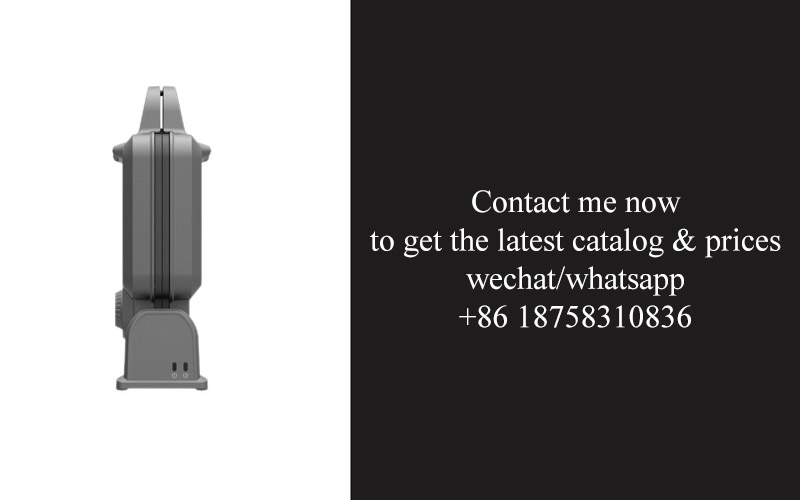
In the competitive landscape of the kitchen appliances industry, the ability to innovate and adapt is crucial. One key aspect that has emerged as a strategic advantage is the in-house mold making process, particularly for grills. This internal capability offers a multitude of benefits that can significantly impact a company’s competitive edge and market position.
The control over the mold-making process allows for a level of customization that is often unattainable when relying on external suppliers. This means that manufacturers can respond quickly to market demands and consumer preferences, ensuring that their products are always at the forefront of innovation. By having an in-house team dedicated to mold making, companies can iterate on designs with greater speed, making it easier to bring new grill models to market.
Moreover, in-house mold making fosters a culture of innovation within the organization. When every aspect of the manufacturing process is under one roof, there’s a natural collaboration between different departments, from design to production. This cross-functional teamwork can lead to the development of unique features and functionalities that set a company’s grills apart from the competition.
Quality assurance is another critical advantage of in-house mold making. With external suppliers, there’s always a risk of discrepancies in the quality of molds, which can directly affect the final product. By having a dedicated team that understands the intricacies of mold design and production, manufacturers can maintain a high standard of quality throughout the grill-making process. This not only ensures customer satisfaction but also reduces the likelihood of recalls or returns due to defective products.
Cost savings can also be a significant benefit of in-house mold making. While the initial investment in mold-making equipment can be substantial, over time, it can lead to significant cost reductions. By eliminating the need to outsource mold making, companies can reduce the costs associated with transportation, logistics, and potential delays in production. Additionally, with direct control over the mold-making process, companies can optimize the design for efficiency, potentially reducing the material waste and production time.
Another strategic advantage is the ability to keep proprietary information secure. When a company relies on external mold makers, there’s always a risk that sensitive design information could be compromised. By keeping the mold-making process in-house, manufacturers can ensure that their intellectual property remains protected, which is especially important in the grill industry where design patents can be a significant asset.
Furthermore, in-house mold making enables a company to be more agile in the face of market changes. The ability to quickly modify molds and adapt production lines to new grill models can be the difference between capturing a new market trend or missing out. This agility is crucial in a fast-paced industry where consumer preferences can shift rapidly.
The strategic advantage also extends to the training and development of employees. By investing in mold-making capabilities, companies can provide their workforce with specialized skills that are essential for the production of high-quality grills. This not only enhances the company’s human capital but also ensures that there is a pool of skilled workers who can contribute to ongoing innovation and improvement.
In terms of environmental sustainability, in-house mold making can also play a role. By reducing the need for external suppliers, companies can minimize their carbon footprint and contribute to a more sustainable supply chain. This commitment to environmental responsibility can also be a selling point for eco-conscious consumers.
Finally, in-house mold making can enhance the overall brand image of a company. Consumers often perceive brands that control their supply chain as more reliable and committed to quality. This perception can lead to increased customer loyalty and a stronger market position.
In conclusion, the strategic advantage of in-house mold making for grill manufacturers is multifaceted. From fostering innovation and ensuring quality to achieving cost savings and maintaining competitive agility, the benefits are clear. As the kitchen appliances industry continues to evolve, companies that invest in their own mold-making capabilities will likely find themselves well-positioned to lead the way in grill innovation and market success.

In the realm of kitchen appliances, the grill stands out as a staple that has evolved with the times. The art of grill mold making has become a cornerstone in crafting innovative designs that cater to the ever-changing demands of consumers. Precision molding is not just a process; it’s a gateway to pushing the boundaries of what a grill can offer.
Grill mold making allows manufacturers to create intricate and unique shapes that enhance the functionality and aesthetic appeal of these cooking devices. The precision involved in this process ensures that every detail is meticulously crafted, leading to a product that not only performs well but also stands out in a crowded market.
One of the key benefits of precision molding in grill design is the ability to integrate advanced features seamlessly. For instance, a grill with a sleek, curved design might not only look modern but also offer a more ergonomic cooking surface. The precision of the mold ensures that these curves are consistent throughout the production run, reducing the likelihood of defects and improving the overall user experience.
The use of high-quality materials in grill mold making is also crucial. Aluminum, for example, is a popular choice for its durability and heat resistance. By molding these materials with precision, manufacturers can create grills that not only withstand the rigors of outdoor cooking but also maintain their structural integrity over time. This attention to detail in the mold-making process translates to a longer lifespan for the grill itself.
Innovative grill designs often require complex molds that can accommodate intricate details. Consider the integration of built-in thermometers or digital controls. These features are not just for show; they enhance the cooking experience by allowing users to monitor and adjust the grill’s temperature with precision. The precision of the mold ensures that these components fit perfectly within the grill’s structure, contributing to its overall reliability.
Another aspect of innovative grill design is the focus on ease of use. Molding techniques allow for the creation of features like foldable legs, removable cooking grids, or even integrated lighting. These elements are not just about convenience; they also add to the grill’s versatility, making it suitable for a wider range of cooking scenarios.
The environmental impact of manufacturing processes is also a growing concern. In-house mold making offers a strategic advantage in this regard. By keeping the mold-making process in-house, manufacturers can closely control the materials and methods used, ensuring that they are environmentally friendly. This approach can lead to the development of grills that are not only sustainable but also made with a reduced carbon footprint.
Moreover, in-house mold making enables faster prototyping and iteration. When a new design is in the works, the ability to quickly produce a mold and test the design can significantly shorten the development cycle. This agility allows manufacturers to respond swiftly to market trends and consumer feedback, ensuring that their grills remain at the forefront of innovation.
The precision of mold making also extends to the finish of the grill. A high-quality mold can produce a smooth, durable surface that is resistant to rust and corrosion. This not only makes the grill look attractive but also ensures that it maintains its appearance even after years of use.
In the competitive landscape of kitchen appliances, the ability to offer innovative grill designs is a significant differentiator. Precision molding plays a pivotal role in this differentiation by allowing manufacturers to create products that are not just functional but also a statement of design and technology. From the integration of smart features to the creation of unique aesthetics, in-house mold making is the silent hero behind the scenes, shaping the future of grills.
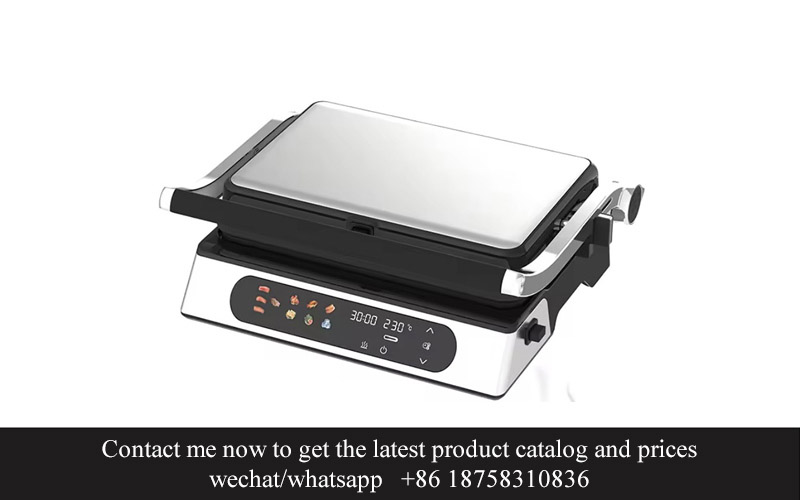
In the competitive landscape of the kitchen appliance industry, the impact of precision molding on product quality and efficiency cannot be overstated. The meticulous process of creating molds for grills and other kitchen appliances has evolved into a cornerstone of excellence in design and performance. Here’s how this approach shapes the end product:
The precision molding process ensures that every aspect of the grill’s design is executed with the utmost care. From the intricate details of the grill’s surface to the structural integrity of its components, each element is crafted to meet the highest standards of quality. This level of detail not only enhances the visual appeal of the grill but also contributes to its durability and longevity.
Grills that are molded with precision are less prone to defects and inconsistencies. The tight tolerances maintained during the molding process result in components that fit together seamlessly, reducing the likelihood of leaks or malfunctions. This attention to fit and finish is particularly crucial in grills, where a poor seal can lead to inefficient cooking and potential safety hazards.
Efficiency is a key concern in kitchen appliances, and precision molding plays a pivotal role in optimizing performance. The molds used in the molding process are designed to create parts that are optimized for airflow, heat distribution, and overall cooking efficiency. This means that grills can cook food more evenly and at higher temperatures, leading to better flavor and quicker cooking times.
The use of advanced materials in the molding process has also had a significant impact on product quality and efficiency. Materials like stainless steel and aluminum, which are commonly used in grill manufacturing, are chosen for their heat resistance and structural strength. Through precision molding, these materials can be shaped into complex forms that are not only robust but also highly efficient in their function.
One of the most notable impacts of precision molding on grill products is the reduction in waste. By creating molds that are tailored to the specific dimensions and requirements of each part, manufacturers can minimize material usage and scrap. This not only cuts down on costs but also reduces the environmental footprint of the production process.
The precision molding process also allows for the integration of innovative features into grill designs. Features such as non-stick coatings, adjustable heat settings, and integrated lighting can be seamlessly incorporated into the grill’s structure. These additions enhance the user experience and provide practical benefits that customers value.
Moreover, the consistency of the molding process ensures that each grill produced is a testament to the manufacturer’s commitment to quality. Consistency in manufacturing leads to fewer customer complaints and higher satisfaction rates. When a grill performs as advertised and maintains its quality over time, it builds trust and loyalty among consumers.
In terms of efficiency, the precision molding process itself is a marvel of modern technology. It allows for the rapid production of high-quality parts with minimal manual labor. This not only speeds up the manufacturing process but also reduces the potential for human error. Automation and advanced machinery are at the heart of this efficiency, leading to a streamlined production line that can meet the demands of a global market.
The impact of precision molding on product quality and efficiency is also evident in the testing phase. Grills that are molded with precision can be subjected to rigorous quality control checks, ensuring that they meet stringent safety and performance standards. This thorough testing process is essential for identifying and correcting any issues before the product reaches the consumer.
Lastly, the precision molding process enables designers and engineers to push the boundaries of what is possible in grill design. The ability to create intricate and unique shapes without compromising on quality opens up new possibilities for innovation. This innovation can lead to products that are not only more efficient but also more intuitive to use, ultimately enhancing the cooking experience for the end user.
In summary, the strategic use of precision molding in the production of grills has revolutionized the industry. It has raised the bar for product quality, driven efficiency improvements, and allowed for the development of innovative features that enhance the cooking experience. As the kitchen appliance market continues to evolve, the role of precision molding will only grow in importance, ensuring that consumers receive products that are not just high-quality but also cutting-edge in design and performance.
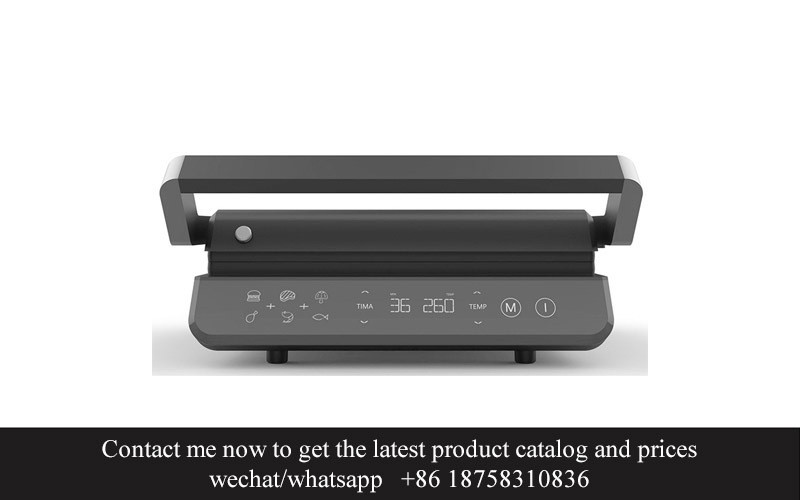
In the competitive world of kitchen appliances, the ability to produce high-quality products efficiently is paramount. When it comes to grill manufacturing, leveraging in-house capabilities can significantly impact cost-effectiveness. Here’s how:
Manufacturers who invest in in-house mold making and production processes often find that they can reduce the costs associated with outsourcing. By eliminating the need to rely on external suppliers, they can cut down on transportation expenses, reduce the risk of delays, and avoid the markup that comes with sourcing from third parties. This direct control over the supply chain translates into substantial savings that can be passed on to consumers.
Streamlined LogisticsWith in-house mold making, the entire production process is under one roof. This not only ensures a seamless flow of materials and components but also minimizes the time and resources spent on coordinating with external suppliers. The streamlined logistics mean that products can be produced more quickly, reducing inventory costs and the risk of stockouts.
Enhanced Quality ControlIn-house mold making allows for a more rigorous quality control process. Since the manufacturer has complete control over the mold design and the production process, it’s easier to ensure that every grill meets the highest standards. This level of control also means that any defects or issues can be identified and addressed immediately, reducing the number of defective products that need to be reworked or discarded.
Cost-Effective ToolingIn the realm of grill manufacturing, the molds are the backbone of the production process. Creating these molds in-house can be more cost-effective than purchasing them from external mold makers. Not only does this eliminate the markup that comes with buying from third parties, but it also allows manufacturers to tailor the molds specifically to their needs, potentially reducing the complexity and cost of the mold design.
Reduced Lead TimesWhen relying on external mold makers, there can be significant lead times, especially if the manufacturer needs a custom mold or if there are delays in the production process. By having in-house mold making capabilities, manufacturers can reduce these lead times, ensuring that the production of new grill models can begin more quickly. This agility is crucial in the fast-paced appliance industry, where staying ahead of market trends is key.
Investment in TechnologyIn-house mold making often involves a significant investment in technology and machinery. However, this investment pays off in the long run by enabling manufacturers to produce complex and innovative grill designs that may not be feasible with standard molds. The latest technologies in mold making can also improve the efficiency of the production process, leading to higher output with the same or fewer resources.
Customization and InnovationThe ability to create custom molds in-house opens up opportunities for innovation. Manufacturers can experiment with different designs, materials, and features without the constraints that might come with working with existing molds. This can lead to more unique and marketable products, which can justify the higher costs associated with in-house mold making.
Long-Term Cost SavingsWhile the initial investment in in-house mold making can be substantial, the long-term cost savings can be significant. Over time, the manufacturer will see a return on their investment through reduced costs, improved quality, and increased production efficiency. This can also lead to increased profitability and a stronger competitive position in the market.
SustainabilityIn-house mold making can also contribute to a more sustainable production process. By reducing the need for external suppliers, manufacturers can cut down on the carbon footprint associated with transportation and logistics. Additionally, having better control over the production process can lead to less waste and more efficient use of resources.
In conclusion, the adoption of in-house mold making capabilities in grill manufacturing can lead to a more cost-effective production process. This approach not only reduces costs but also enhances product quality, improves efficiency, and allows for greater customization and innovation. As the kitchen appliance industry continues to evolve, the strategic advantage of in-house mold making will likely become even more pronounced.
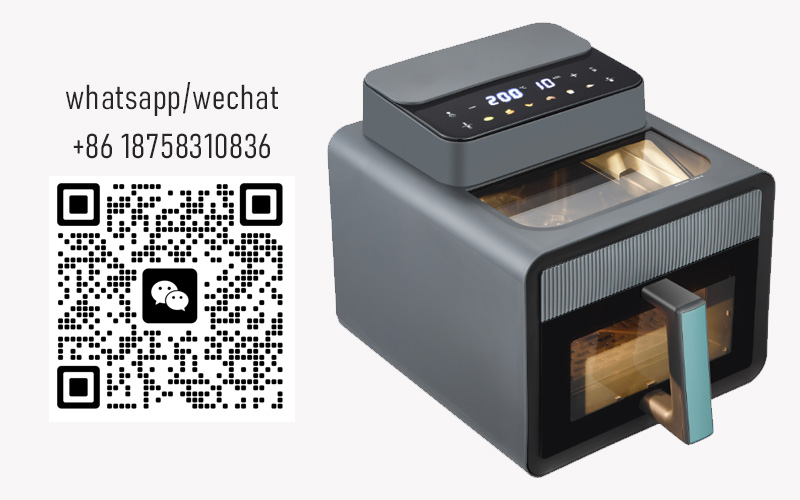
In the world of grill manufacturing, innovation often leads to groundbreaking designs that not only enhance the cooking experience but also set new standards for product quality and efficiency. Here are a few case studies that showcase success stories in grill mold innovation:
The sleek, compact design of the EcoGrill, a product from GrilleCraft Innovations, is a testament to the power of in-house mold making. The company’s decision to invest in state-of-the-art molding technology allowed them to create a grill with a unique shape that maximizes heat distribution while minimizing space usage. This design innovation has not only captured the attention of consumers but has also increased the efficiency of their manufacturing process.
The ProBake Grill by FireTech has revolutionized the outdoor cooking industry with its innovative baking plate mold. The mold’s intricate design ensures uniform heat distribution, which is crucial for achieving perfect barbecue results. By developing this mold in-house, FireTech was able to control the quality and consistency of their product, resulting in a high level of customer satisfaction and repeat business.
One of the most remarkable success stories in grill mold innovation comes from GreenGlow Grills, which introduced the world to the EcoGrill Pro. The mold used for this grill was designed to incorporate advanced insulation technology, significantly reducing energy consumption. The in-house team at GreenGlow worked tirelessly to refine the mold, ensuring that the grill’s performance was up to par with their brand’s reputation for sustainability and efficiency.
Another notable example is the Fusion Grill by Elite Barbecue Systems. The mold for this grill was designed to be modular, allowing for easy replacement of parts and customization for different fuel types. This innovative approach to mold making has not only streamlined the production process but has also opened up new markets for Elite Barbecue Systems, as they can cater to a wider range of consumer preferences.
The ZenGrill by Zenith Appliances is a prime example of how precision molding can lead to a premium product. The mold for this grill was meticulously crafted to create a seamless, sleek exterior that complements the advanced cooking technology inside. The in-house team’s dedication to the mold’s design has resulted in a grill that is not only a visual delight but also a culinary powerhouse.
In the case of the SmartGrill by TechGrill Solutions, the mold was the key to integrating cutting-edge smart technology into a traditional grill design. The mold allowed for the precise placement of electronic components, ensuring that the grill remains both functional and user-friendly. This success story is a perfect blend of traditional craftsmanship and modern innovation.
The EcoBlast Grill by NatureGrill has taken the concept of an eco-friendly grill to new heights. The mold for this grill was designed to be 100% recyclable, a significant step forward in the industry. By keeping the mold-making process in-house, NatureGrill was able to closely manage the quality of the materials used and the overall manufacturing process, resulting in a product that aligns with their commitment to environmental sustainability.
These case studies highlight the transformative impact of in-house mold making on grill innovation. Each company has leveraged this capability to push the boundaries of what is possible in outdoor cooking, resulting in products that are not only high-quality and efficient but also unique and tailored to the needs of their customers. The success stories of these grills serve as inspiration for continued innovation in the kitchen appliance industry.

In the ever-evolving world of kitchen appliances, the role of in-house mold making for grills is reshaping the industry with innovative trends that promise to revolutionize the way we cook. Here’s a glimpse into the future of grill mold making, highlighting some of the key trends that are set to make a significant impact.
Grill mold making is no longer just about creating functional products; it’s about crafting experiences that cater to the evolving preferences of consumers. One trend that is gaining traction is the integration of smart technology within grill molds. Imagine a grill that not only cooks your food but also suggests recipes, monitors the cooking process, and adjusts its temperature to ensure perfect results every time.
Sustainability is another driving force in the grill mold making industry. With environmental concerns at the forefront, manufacturers are looking for ways to reduce their carbon footprint. This includes using eco-friendly materials for molds and developing grills that are easier to recycle at the end of their life cycle. The trend towards sustainable mold making isn’t just about doing good; it’s also about appealing to a growing market segment that values green living.
Customization is on the rise, and grill mold making is at the heart of this movement. Consumers no longer want a one-size-fits-all grill; they’re looking for products that can be tailored to their specific needs and preferences. Molds are being designed to accommodate various cooking styles, from traditional charcoal grilling to advanced infrared technology. The ability to create unique and personalized grills not only enhances customer satisfaction but also opens up new revenue streams for manufacturers.
The precision of modern grill mold making has enabled the development of grills with superior heat distribution and retention. This is crucial for achieving consistent cooking temperatures, which is essential for cooking meats to perfection. The use of advanced CAD/CAM software allows designers to create molds with intricate details that ensure the most efficient heat flow, reducing cooking times and energy consumption.
In the realm of materials, grill mold making is exploring the use of advanced materials that offer better heat resistance, durability, and ease of maintenance. Materials like advanced ceramics and high-performance alloys are being tested for their potential to enhance the performance of grills. These materials not only improve the grill’s lifespan but also contribute to a more seamless user experience.
The integration of aesthetics into grill mold making is another trend that’s gaining momentum. Today’s consumers are not just interested in a grill that works well; they want a piece of kitchen equipment that complements their home’s decor. Molds are being designed to create sleek, modern-looking grills that blend functionality with style. This trend is particularly important in high-end markets where aesthetics play a significant role in consumer purchasing decisions.
Collaboration between mold makers and grill designers is also becoming more integrated. Instead of working in silos, these two disciplines are coming together to create holistic solutions that address both form and function. This synergy leads to the creation of grills that not only look good but also perform exceptionally well.
Safety is a paramount concern in grill mold making, and the industry is continuously working to innovate in this area. New molds are being developed with features that prevent accidents, such as cool-touch handles and safety interlocks. These innovations are not only beneficial for the end-user but also for manufacturers who are looking to build a reputation for safety and reliability.
The future of grill mold making is also intertwined with the rise of connected appliances. With the Internet of Things (IoT) becoming increasingly prevalent, grill molds are being designed to be compatible with smart home systems. This means that your grill can be controlled remotely, receive updates, and even notify you when it’s time to start cooking.
Lastly, the globalization of the grill mold making industry is leading to a wealth of new ideas and designs. As manufacturers and designers from different parts of the world collaborate, they bring with them diverse perspectives and cultural influences, resulting in a rich tapestry of grill designs that cater to a global audience.
In conclusion, the trends in in-house mold making for grills are diverse and dynamic, reflecting the industry’s commitment to innovation, sustainability, customization, and user experience. As these trends continue to evolve, they will undoubtedly shape the future of grilling, bringing new possibilities to consumers around the world.

In the ever-evolving landscape of grill manufacturing, the role of technology has become indispensable in advancing grill molding. From the design phase to the final product, technology has reshaped the way molds are created and used. Here’s a closer look at how tech is driving innovation in grill molding.
The advent of computer-aided design (CAD) and computer-aided manufacturing (CAM) has revolutionized the mold-making process. These tools allow designers to create intricate and complex grill molds with precision, ensuring that the final product meets the highest standards of quality. The ability to visualize and simulate the mold-making process before production begins saves time and resources, as any potential issues can be addressed early on.
Advanced materials science has also played a pivotal role in enhancing grill molding. New materials, such as high-performance plastics and metals, offer improved durability and heat resistance. These materials are crucial for creating molds that can withstand the intense temperatures and pressures of grill production, ensuring that the final product is not only aesthetically pleasing but also functional.
3D printing technology has opened up new possibilities for grill mold making. This additive manufacturing process allows for the creation of molds with intricate details and unique shapes that were previously unattainable. 3D printing is particularly useful for prototyping and small-batch production, enabling manufacturers to quickly test and iterate designs without the need for large-scale mold production.
The integration of robotics in the mold-making process has significantly increased efficiency. Robots can perform repetitive tasks with unmatched speed and accuracy, reducing the likelihood of human error. This automation not only speeds up the production process but also ensures consistency in the quality of the molds produced.
Artificial intelligence (AI) and machine learning (ML) are being increasingly employed to optimize the grill molding process. AI algorithms can analyze vast amounts of data to predict and prevent potential issues in mold design and production. ML models can learn from past experiences to make more accurate predictions and adjustments, leading to better mold performance and longer lifespan.
Real-time monitoring systems have become integral to the grill molding process. Sensors installed within the molds can provide instant feedback on the molding process, allowing for immediate adjustments if deviations occur. This ensures that the final product meets the exact specifications, reducing waste and improving quality control.
Technology is also driving sustainability in grill molding. By optimizing the manufacturing process, companies can reduce energy consumption and waste. Advanced molds can be designed to be more easily recycled or disassembled for maintenance, contributing to a greener production cycle.
With the help of technology, grill mold making now allows for greater customization and personalization. Customers can request specific features or modifications to their grills, and technology can accommodate these requests efficiently. This not only enhances customer satisfaction but also opens up new market opportunities for grill manufacturers.
The use of technology in grill molding has also fostered collaboration among different departments within a manufacturing company. Data sharing platforms enable designers, engineers, and production teams to work together seamlessly, ensuring that every aspect of the mold-making process is aligned with the company’s goals.
Looking ahead, the future of grill molding is poised to become even more integrated with technology. Emerging technologies such as augmented reality (AR) and virtual reality (VR) are likely to play a role in training employees and improving design processes. As technology continues to evolve, grill mold making will become more precise, efficient, and sustainable, ultimately leading to better products for consumers.
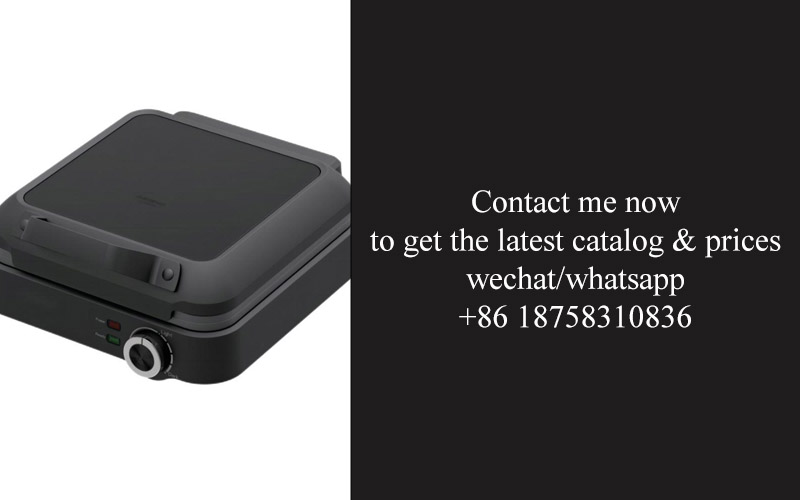
In the ever-evolving landscape of kitchen appliances, the future of grills and in-house mold making holds immense potential. As technology advances and consumer demands shift, the intersection of these two realms promises to redefine what we expect from our outdoor cooking experiences. Here’s a glimpse into the future where grills are not just cooking tools but innovative pieces of art that enhance our culinary adventures.
Grills are becoming more than just cooking surfaces; they are extensions of our kitchens, designed to cater to the diverse tastes and preferences of modern cooks. In-house mold making plays a pivotal role in this transformation by enabling manufacturers to create custom designs that cater to specific market needs. The future of grills, therefore, hinges on the ability to integrate advanced molding techniques with cutting-edge technology.
One trend we can expect to see is the integration of smart features into grill designs. With the rise of the Internet of Things (IoT), grills are poised to become part of a connected kitchen ecosystem. In-house mold making allows for the seamless integration of technology, from Bluetooth connectivity for remote temperature control to sensors that monitor cooking conditions and adjust flame intensity automatically.
Another trend is the emphasis on sustainability. As consumers become more environmentally conscious, grill manufacturers are responding by creating products that are not only durable but also eco-friendly. In-house mold making can facilitate the production of grills made from recycled materials, reducing waste and minimizing the carbon footprint.
Customization is also a key factor in the future of grills. With in-house mold making capabilities, manufacturers can offer a wide range of designs, from sleek, minimalist models to rugged, outdoor-oriented grills. This flexibility allows consumers to choose a grill that not only complements their outdoor space but also reflects their personal style.
The precision of in-house mold making is crucial in ensuring the quality and performance of these high-tech grills. Molds can be crafted with intricate details that not only enhance the aesthetics but also improve functionality. For instance, precision molds can create complex flame tamer systems or innovative cooking grids that distribute heat more evenly, resulting in better food quality.
Moreover, the role of technology in advancing grill molding cannot be overstated. Advanced CAD (Computer-Aided Design) and CAM (Computer-Aided Manufacturing) software are revolutionizing the design and production process. These tools allow engineers to simulate and test designs before they are even made, reducing the need for physical prototypes and minimizing costs.
The future of grill molding also involves the use of materials that are not only durable but also innovative. Lightweight metals, high-tech plastics, and even bio-composites are being explored for their potential to create grills that are both strong and eco-friendly. These materials can be shaped with precision using in-house molds, leading to products that are not just functional but also a statement of technological advancement.
Safety is another area where technology and in-house mold making are making significant strides. Grill designs are becoming safer with the integration of child-proof locks, flame guards, and heat-resistant materials. Molds can be designed to incorporate these safety features seamlessly, ensuring that the end product is both user-friendly and secure.
The competitive landscape of grill manufacturing is also evolving. Companies that embrace in-house mold making and technology are likely to gain a competitive edge. They can respond more quickly to market demands, introduce new products faster, and maintain a high standard of quality that keeps customers coming back.
In conclusion, the future of grills and in-house mold making is bright and filled with possibilities. As technology continues to advance, we can expect to see grills that are not just cooking appliances but also smart, sustainable, and personalized experiences. The key to this future lies in the ability of manufacturers to leverage the precision and innovation that in-house mold making offers, ensuring that the grill remains a staple in outdoor cooking for generations to come.